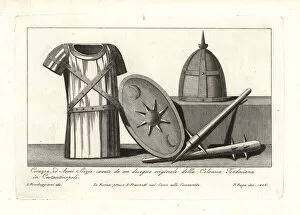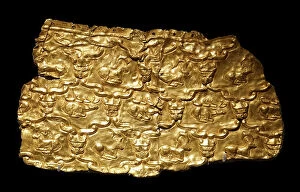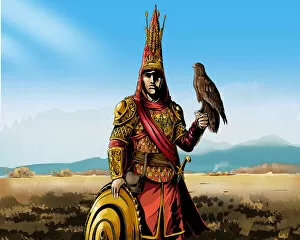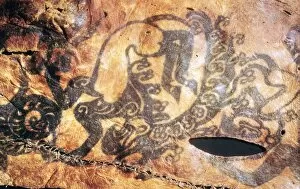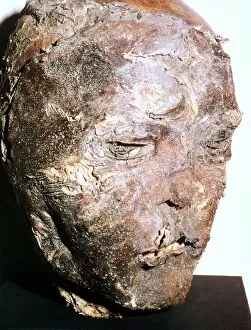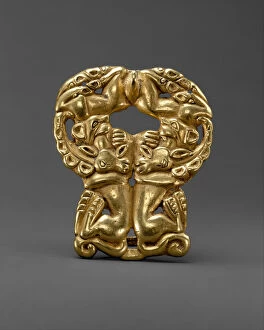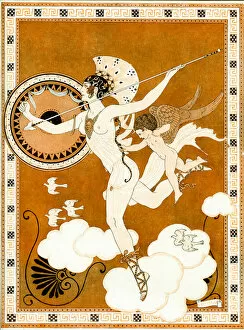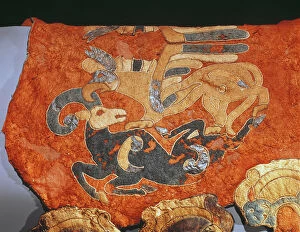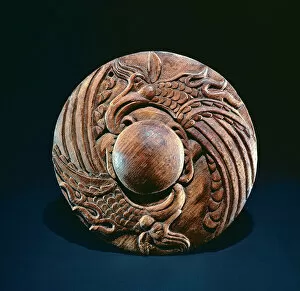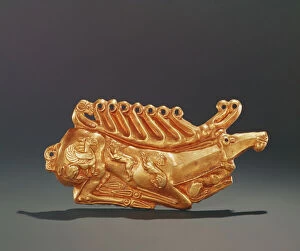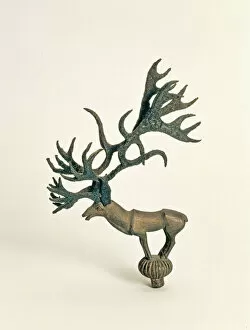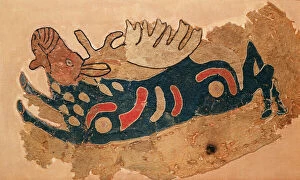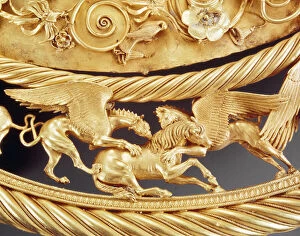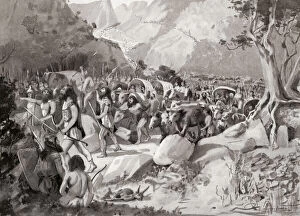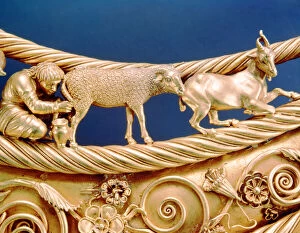Scythian Collection
The Scythians, known for their formidable armour and weapons, were a nomadic people who inhabited the vast steppes of Eurasia
All Professionally Made to Order for Quick Shipping
The Scythians, known for their formidable armour and weapons, were a nomadic people who inhabited the vast steppes of Eurasia. The Golden Man, a symbol of power and prestige, represents the Saka warrior from south-eastern Kazakhstan. Adorned in intricate Scythian armour and armed with deadly weapons, these warriors struck fear into the hearts of their enemies. One notable piece of their arsenal was the Scythian shield, crafted to withstand even the fiercest blows. Another remarkable artifact is the Stag Plaque, cast in gold using an ancient shell mold technique. This exquisite piece showcases the artistic prowess of these skilled craftsmen. Jewelry also played a significant role in Scythian culture. A stunning example is the Bracelet from 2nd century BC made with gold and adorned with turquoises - a testament to their love for beauty and opulence. In battle scenes like that depicted on Ludovisi Sarcophagus relief from AD 250-60 marble sculpture shows fierce clashes between Romans and Barbarians including elements reminiscent influence. The Xiongnu Belt buckle portrays paired felines attacking ibexes in intricate goldwork dating back to 3rd-2nd century BC - showcasing both craftsmanship skills as well as cultural motifs shared across regions. Artistic representations such as L'Amazone 1916 (Pochoir) depict strong female figures embodying traits associated with Scythian women - bravery, independence, and skill in warfare. Archaeological finds like Funeral chariot discovered in Siberia dating back to 5th century BC reveal not only advanced woodworking techniques but also provide insights into burial practices prevalent among this ancient civilization. Elk Fawn Finial made from solid cast gold during 400-200 BC showcases attention to detail while Lion Plaque crafted around 1000-500 BC demonstrates mastery over bronze repousse technique – both reflecting the Scythians' reverence for nature and their artistic prowess.

